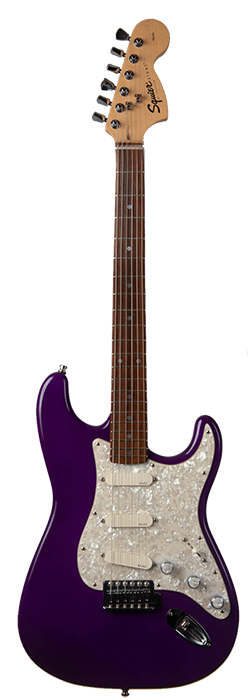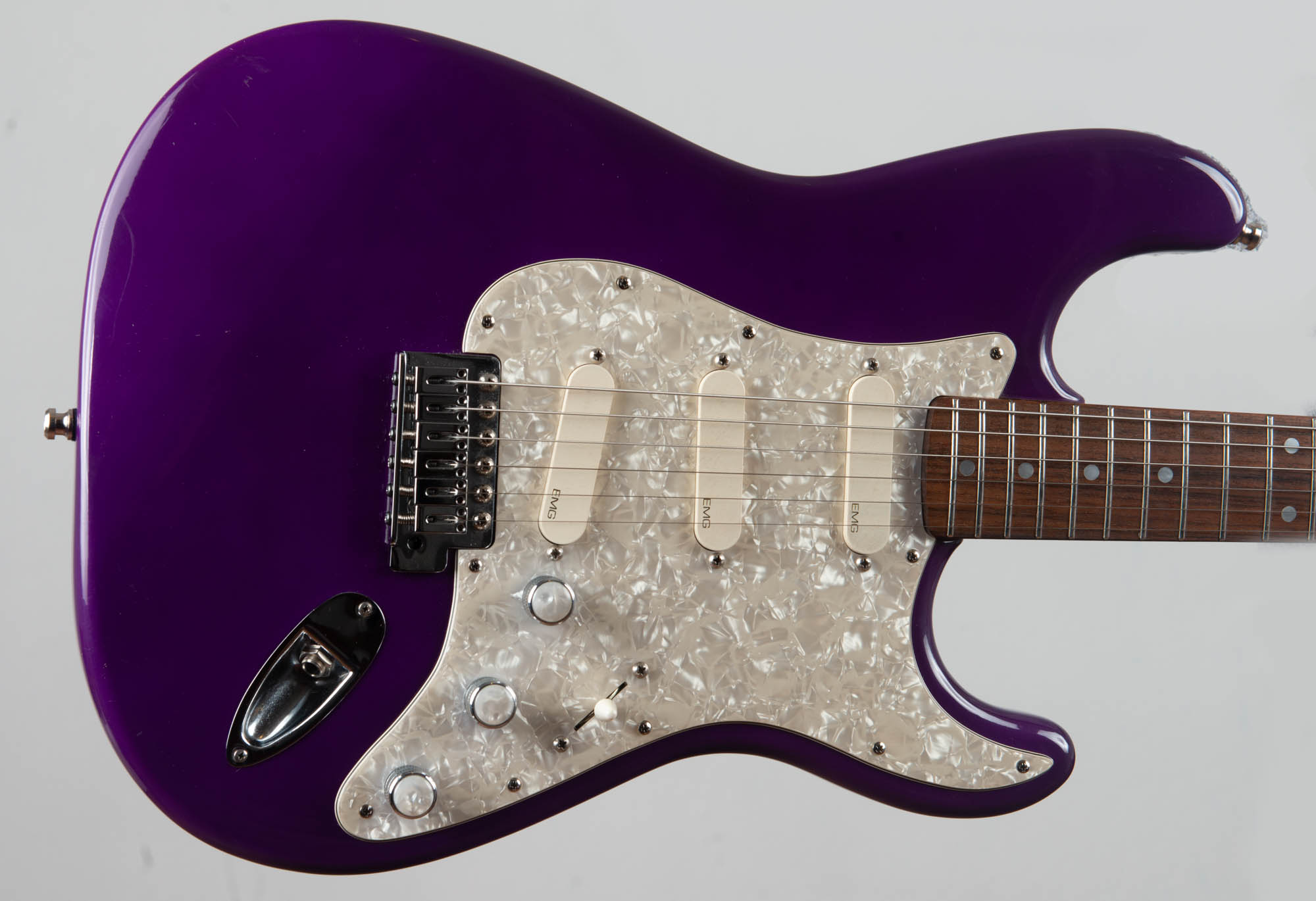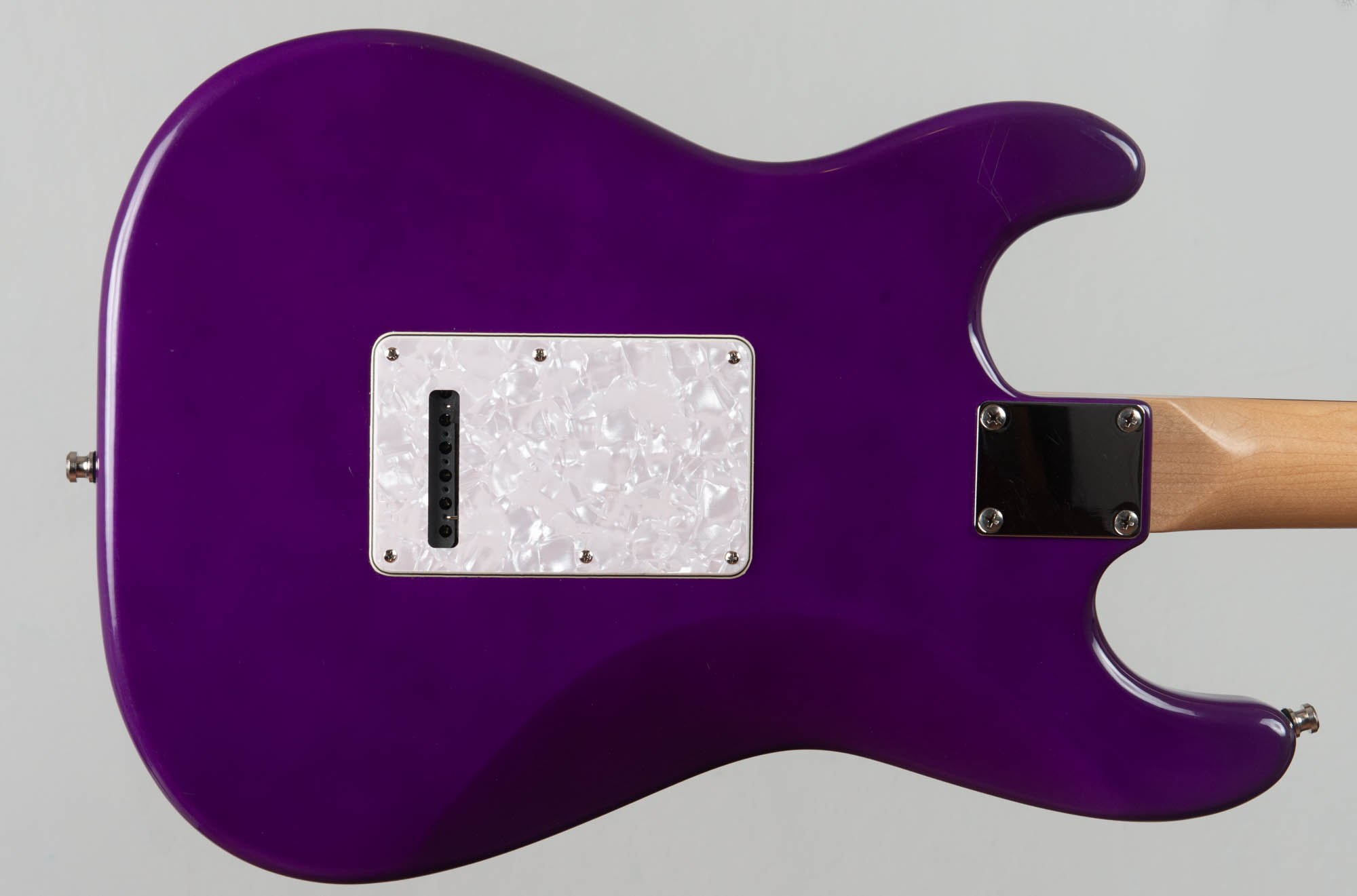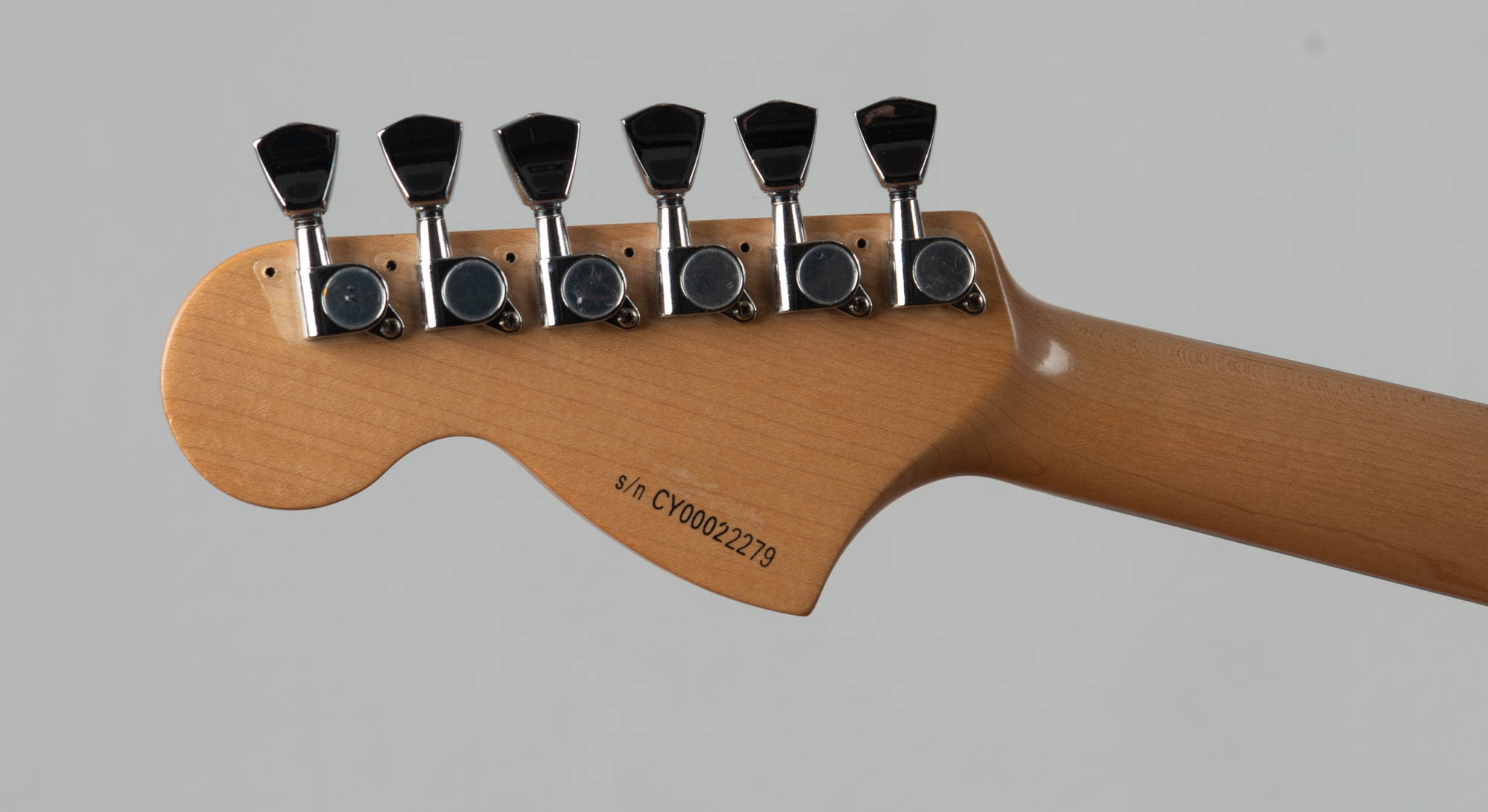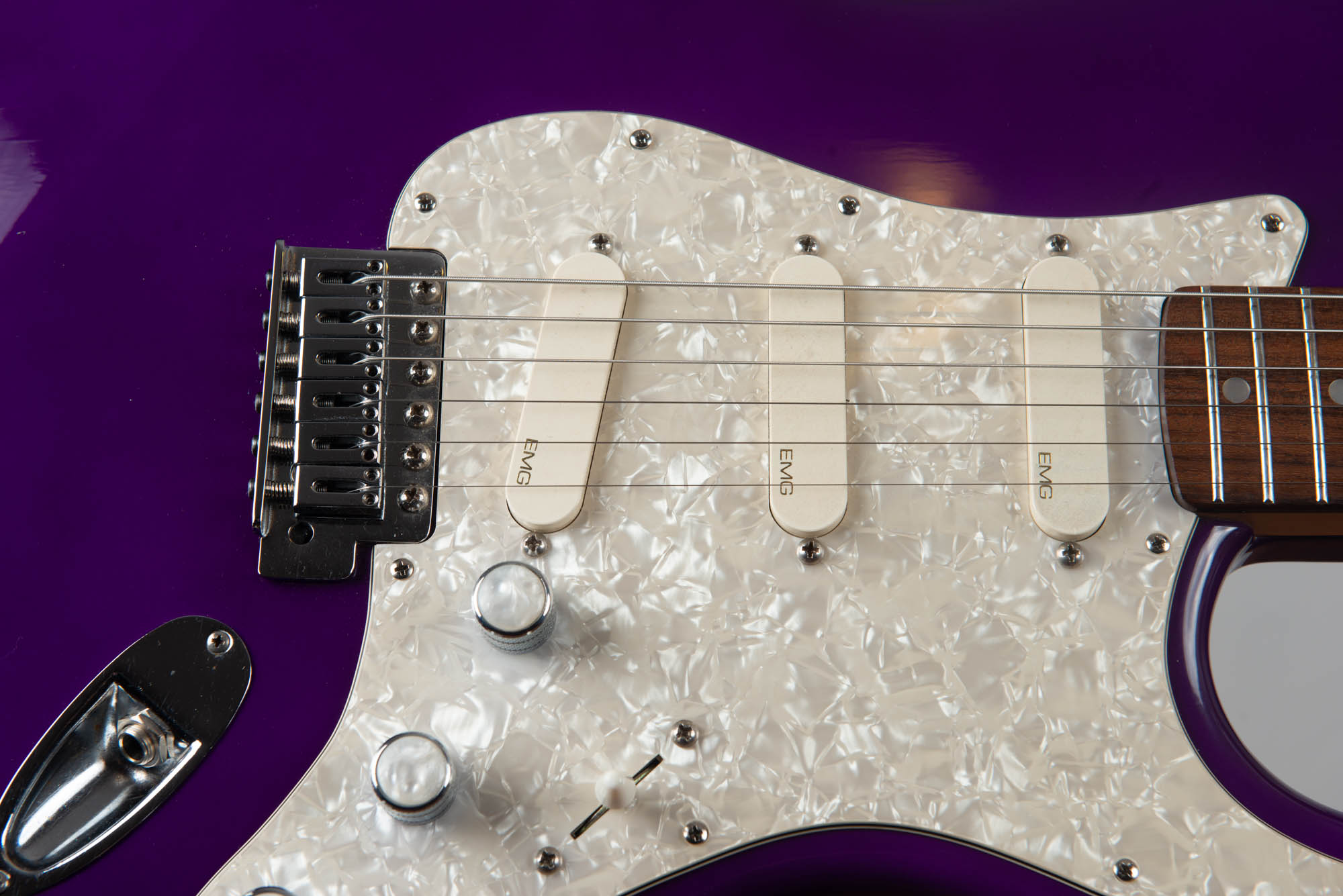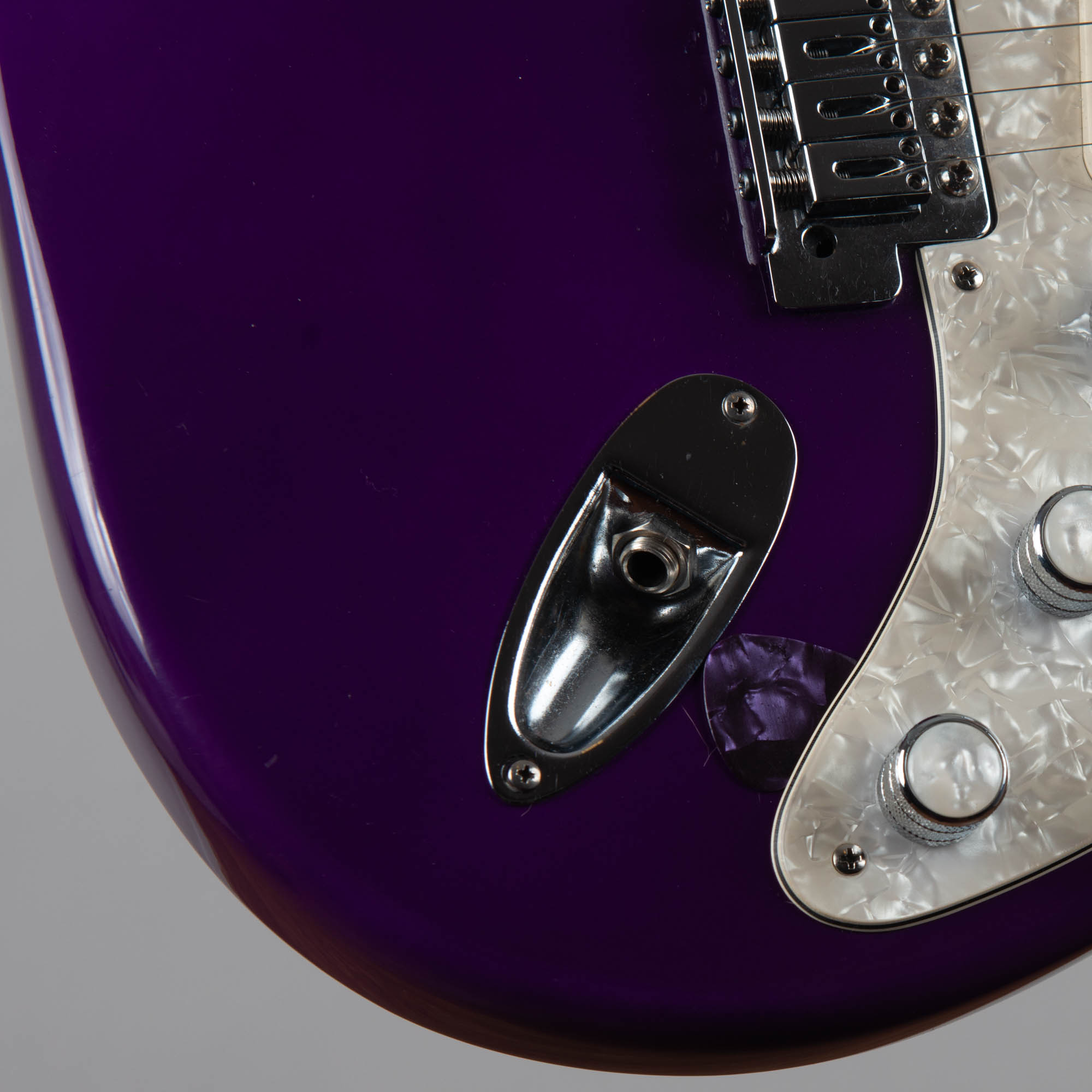Squier Affinity Stratocaster
Year: 2000
Finish: Galactic Purple
Origin: China
Mods: EMG DG-20 pickups, CB Gitty tuners, replacement saddles, knobs, Fender straplocks
Acquired: 2019
Still owned: Yes
The Story:
In the summer of 2019 I focused on improving my skills regarding modifying and upgrading guitars. I felt comfortable adjusting the truss rod on a neck, but I hadn’t tried leveling frets and I’m still mediocre at soldering. But I figured the best way to learn was to simply practice on some low-end guitars, so I bought a few cheapies, including a MIM Fender Strat that had been pretty heavily abused, and I managed to bring them both back to life with various upgrades, ranging from fret crowning to new pickups. They’re not listed on the site because they were intended to be catch-and-release projects. I learned quickly and I’m proud to say I made them both better, not worse!
We visited Disneyland in September for our anniversary, and I scoped out potential guitar stores along our route. As luck would have it, we stopped in Madera to recharge the electric car, and Venturi House of Music sat across the parking lot from where we were tethered. Online, I could see the store specialized in accordions — but you never know what you’ll find, right?
A few months prior, I’d learned that there was a very intense purple finish on some Squiers from the late 90s and early 2000s, supposedly called Galactic Purple. The saturation was through the roof; it looked like it glowed, and I’ve never seen another purple finish quite like it. I found an example for sale locally, but got a weird vibe from the Craigslist seller and backed out — he wanted too much money and was too creepy in communication. So imagine my surprise when I walked into Venturi and found a violently purple Squier Affinity Stratocaster on their tiny wall of guitars.
It was used, with strumming scratches on the pickguard and a few screws missing from the trem cover on the back, but it hadn’t been abused. The tuners were stock and cheap; the neck was smooth but had a lot more relief than I like. It needed at least a setup, but I was already thinking of various improvements. I quietly informed Kat that this intense finish had been on my radar and this specimen was worth saving, and she gave me the silent nod of approval. The shopkeeper was very nice, we agreed on a fair cash price, and I strolled out into the sunlight, grinning like an idiot. And they say Disneyland is the happiest place on earth!
Affinity series instruments go for about $200 new; they’re designed as solid starter guitars, above a Bullet but below a made-in-Mexico Fender. A little research on the serial number revealed that this guitar was built in China and Taiwan in the Yako factory in 2000. The body was very likely made of alder — same as my US-built Strat. The workmanship looked a little rough when I removed the pickguard (there’s a hole from the pickup cavity through to the trem cavity) and the pickups sounded terrible. But this was not unexpected, and with a comfortable neck and groovy rare finish, I still felt it was worth an overhaul.
After a few days of coaxing, the truss road yielded a straight neck that felt very much to my taste. The tuners were easy to replace (though the holes needed to be reamed from 8mm to 10mm, so I went to the hardware store, found a tapered reamer for woodworking, went slow and checked the measurement as I went, and…well, that’s how I learned how to do that! The new tuners then dropped right in, and they were a bargain at $16 from Amazon.
A full fret level, crown and polish later, and the final piece was ready to go: Out with the shrill, nasty pickups and in with David Gilmour’s signature set of EMG pickups. These were a gift from my old friend Forrest who had used them when he was gigging in LA, but donated them to me after seeing my successful rehab efforts with other guitars and realizing they were collecting dust in his closet. It seemed like destiny, so even though it was crazy to install pickups that were twice the value of the guitar itself, I don’t regret it — they sound glorious. The Squier body is a little thinner (1.5″) than a US-made Fender (1.75″) so the EMG’s circuit board juuuust fit in the smaller control cavity, but fit it did.
I replaced the trem block with a steel one, as the original showed corrosion, and wound up blocking it with wood shims to help stability and sustain. But even without those tweaks, it sounds and plays great; I’d argue it didn’t feel this good coming out of the factory.
Did I mention it’s an insane shade of purple? Prince would be proud — so I named it “Darling Nikki.”
